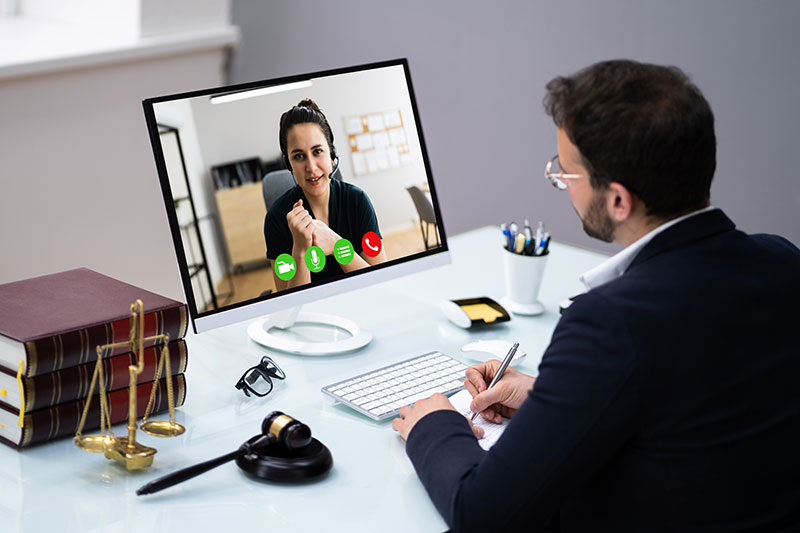Like professionals in other industries, many lawyers have set up home offices since the pandemic broke. Video conferencing is a practical option for legal professionals to conduct legal meetings remotely. Using advanced virtual platforms, modern tools, and support from video transcription service providers, lawyers are effectively collaborating and connecting with their teams and clients from the comfort of their home. As they work remotely, lawyers are using innovative tools to draft and review legal documents, get electronic signatures, and provide clients with up-to-date information. However, to succeed with working from home, lawyers need to be well prepared and know how to leverage the power of video conferencing while maintaining the confidentiality of sensitive client information. Let’s look at the things lawyers should keep in mind when working from home using video conferencing tools.
- Have a Dedicated, Secure Workspace: It’s essential to ensure that your home office is a private and secure place. Take steps to safeguard confidential information with strong passwords on your computer and other devices. When you’re taking calls or conducting virtual meetings, make sure the discussion will not be heard by others. There must be arrangements in place against any risks of loss, destruction, and unauthorized access, use or disclosure of your records as well as physical, technological, and organizational safety measures for both you and your team.
- Get a Strong, Fast Internet Connection: A reliable internet connection with fast upload and download speeds is essential for uploading and downloading large files, collaborating with clients or staff on important documents stored in the cloud, displaying graphics, and attending video conferences. You would need to set up a virtual private network VPN if you need to access key case details and documents stored on your law firm’s on-premise case management software.
- Choose a Quality Video Conferencing Tool: There are a number of video conferencing technologies available today that allow lawyers can use to meet clients, staff, co-counsel, opposing counsel, and other people. Popular options include Zoom, Microsoft Teams, Skype for Business, GoToMeetings, TeamViewer, Webex Meetings, and more. Evaluate each one’s pros and cons and choose the one that best meets your needs. Things to consider when selecting a video conferencing tool include: end-to-end encryption, audio and video quality, and convenience and ease of use. Additionally, the Law Society of British Columbia recommends that lawyers could consider the following aspects when choosing a video conferencing tool:
- Ability to set up a randomized meeting ID for each meeting to keep credentials private
- Ability to set up participant passcodes for additional authentication to be allowed for each meeting
- An option that allows the host to lock the meeting
- A method to remove participants
- A waiting room feature, so that participants can wait in separate virtual room and enter the meeting only when the host allows them to
Unauthorized network traffic can be blocked from reaching the system using a firewall. The Law Society also recommends using the latest version of enterprise software over personal, consumer-grade for client meetings.
- Follow Video Conferencing best Practices: These include: ensuring a neat, professional looking background, keeping distractions at bay, ensuring strong lighting, keeping the video on, using a headset, and muting yourself as you wait your turn to speak.
- Other Tools: Tools Clio recommends for lawyers to function effectively in a remote work setup include: a quality laptop or desktop computer – consider portability needs and processing power when choosing one; a scanner to connect to different devices – look for feature such as the ability to produce text-searchable files and organize all documents to the correct case; a headset for call clarity; cloud-based case management software, a secure client portal, mail service, virtual receptionist service, and a VOIP phone service.
- Monitor Productivity: Tracking how your remote team is performing is important to ensure your firm will meet its productivity goals. There are different types of software to do this, including case management software with built-in analytic capabilities. Ensure that everyone stays on the same page when it comes to business goals, expectations and performance.
Staying connected is the most important thing when working remotely and video conferencing is the best way to do this. While paid software converts the recorded meetings into transcripts, these may not be accurate. The best option to get recordings of virtual meetings transcribed by an online transcription service provider that specializes in legal transcription. Leading companies have professional transcriptionists on board who are well-versed in various legal terms and expressions and can provide error-free documentation of remote legal meetings.




